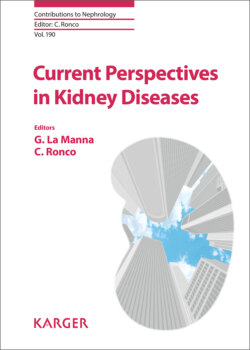Читать книгу Current Perspectives in Kidney Diseases - Группа авторов - Страница 29
На сайте Литреса книга снята с продажи.
Citrate: Mechanism of the Anticoagulant Action
ОглавлениеSodium citrate, infused before the filter, chelates calcium, essential to the coagulation process. The ensuing regional hypocalcemia in the filter inhibits thrombin generation. Citrate is partially removed by filtration or dialysis [7], and the remaining amount, infused into the patient, is rapidly metabolized in the citric acid (Krebs) cycle, especially in the liver, muscle, and renal cortex. The calcium previously chelated is released into the patient’s blood as a result of citrate metabolism, whereas the calcium lost with the effluent needs to be replaced by calcium solution administered to the patient. Systemic coagulation is thus unaffected (Fig. 1).
Fig. 1. Schematic representation of the regional citrate anticoagulation implemented in an extracorporeal circuit of CRRT. The citrate solution is infused before the dialyzer, at a flow rate proportional to blood flow, citrate dose, and solution citrate concentration. Citrate chelates calcium: the resulting effect is the extreme reduction of ionized calcium (iCa) in blood (ideal target 0.3–0.4 mmol/L). Calcium must be administered to the patient to restore the physiological level (1.1–1.25 mmol/L). A specific infusion line is needed either downstream of the dialyzer or directly to the patient. The calcium-citrate complexes are partially lost in the effluent, depending on the dialysis dose. The metabolic load of citrate to the patient will be the difference between citrate infused into the circuit and citrate lost with the effluent (correlation between the effluent volume and the amount of citrate lost).
For anticoagulation, the citrate dose is adjusted to blood flow so as to achieve an ionized calcium (iCa) concentration <0.3–0.5 mmol/L in the filter [4]; the lower the calcium concentration, the higher the degree of anticoagulation [8]. Some protocols use a fixed dose of citrate in relation to blood flow according to an algorithm, with the target of about 3 mmol citrate/L blood flow. Other protocols adjust the citrate dose by measuring the post-filter iCa, which complicates the intervention but optimizes anticoagulation [2, 4].
